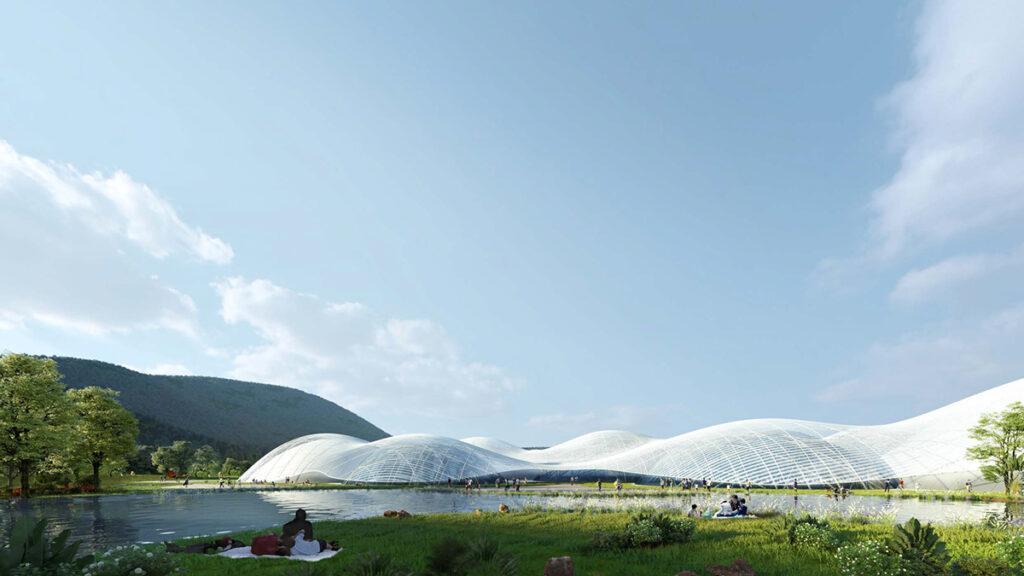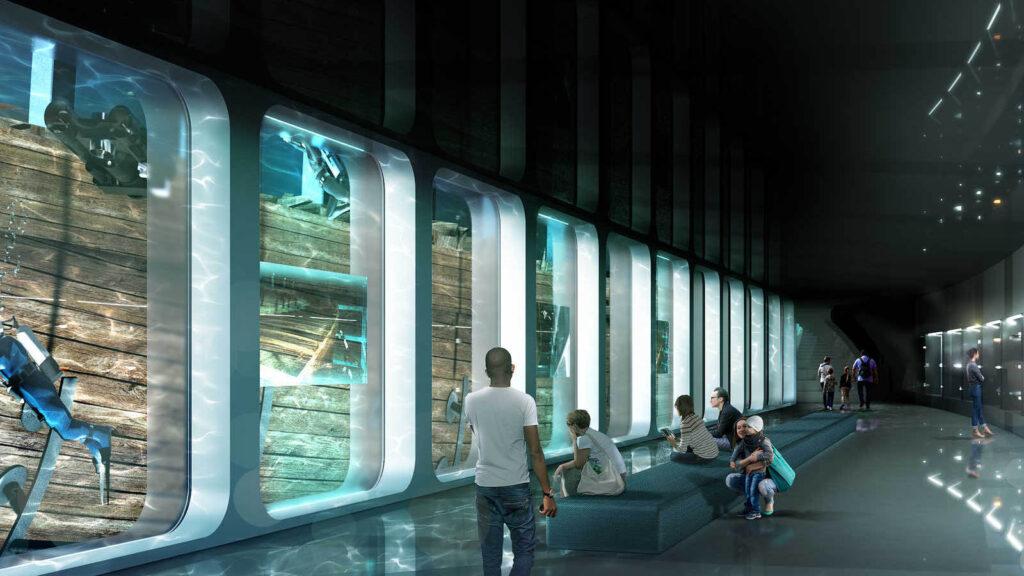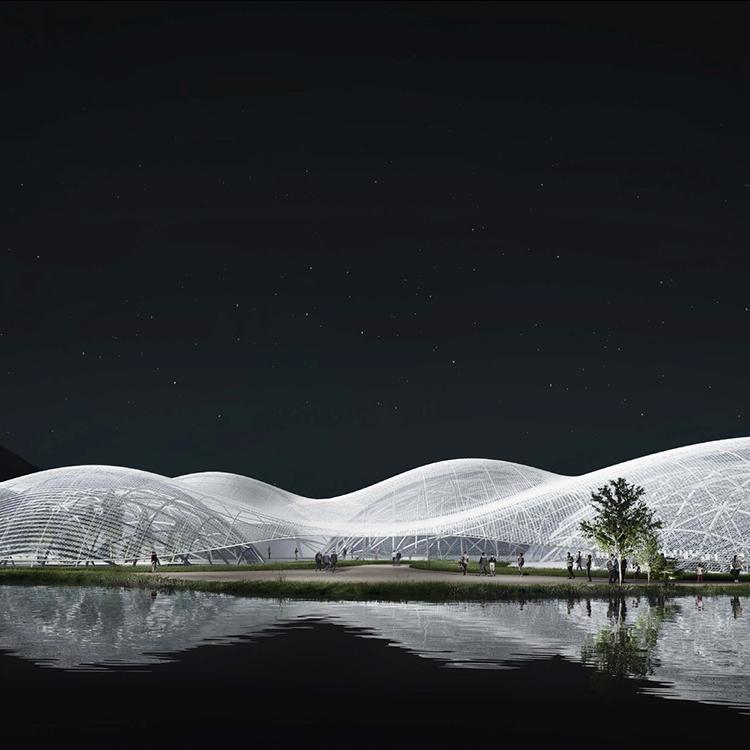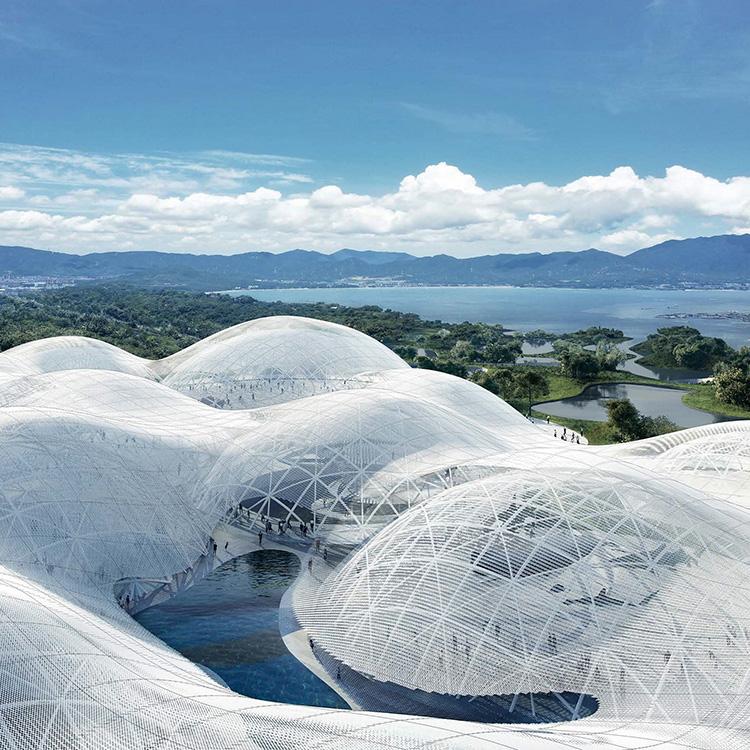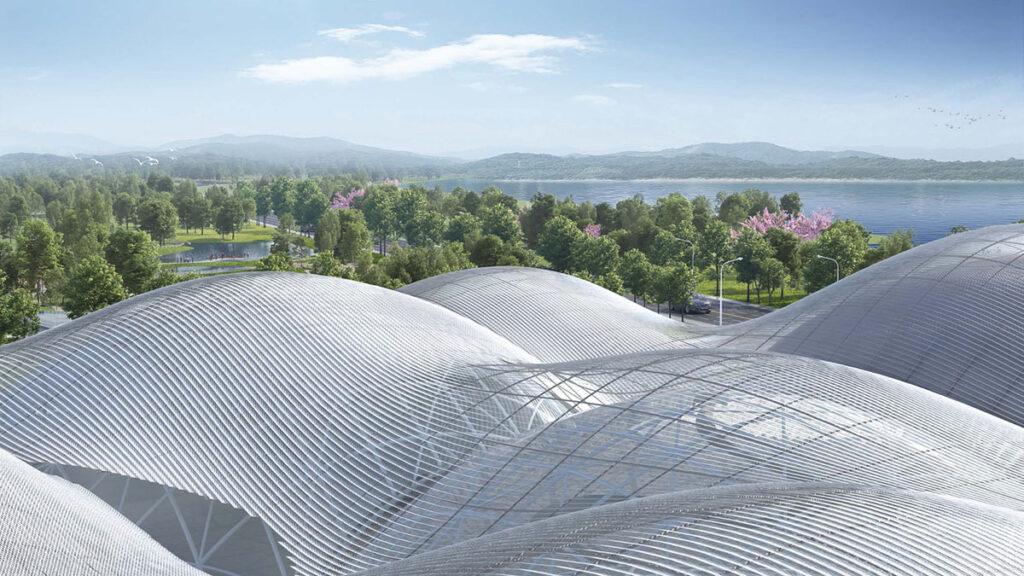Where clouds linger
Shenzhen is set to be home to a museum that should really be built in the sea. Although inspired by bobbing waves, the design ultimately looks like a group of clouds. And the spectacular structure has indeed been titled “Clouds on the Sea”.
For an assignment that involves building a maritime museum embedded in nature, your immediate instinct is simply to put the thing in the sea. That would be appropriate, at least. And it certainly isn’t as far-fetched as you might think. In fact, a spectacular underwater museum is now being developed in Amsterdam, where ZJA Architects have designed a kind of underwater air bubble. All in the interests of putting a sunken, historic ship on view to the public. But that’s another story.
Thousands of miles from Amsterdam, in China’s Shenzhen, the Maritime Museum is being given a new home. The chosen site is in Longqi Bay on Dapeng Peninsula, so there is definitely plenty of water around. The design takes an entirely different approach, though.
88 teams of designers from 20 countries
But let’s take this one step at a time. The project is certainly remarkable – key data from its architecture competition shows that at a glance: 88 world-class teams of designers submitted applications from a total of 170 companies in 20 countries. The final phase then saw 15 groups shortlisted who were invited to present their solutions in person. And finally… the winner was… drumroll please… – SANAA!
Two outstanding designers in action
The Japanese architecture studio is anything but an unknown quantity. In particular, their head designers Kazuyo Sejima and Ryue Nishizawa enjoy the greatest respect around the world. Describing their architectural approach, the two Pritzker Prize winners explain: “We focus on the essence. That is the most important thing for us. And the essence of a space just happens to be white. We can’t reduce our architecture any further, because then it would probably be transparent and invisible.”
Or more precisely: SANAA builds in a minimalist style, mainly with raw concrete, steel, aluminium and glass. The materials mostly remain untreated, and paints are exclusively white.
It was this reduction to the bare essentials that ultimately captured the jurors’ imagination. The official statement on the jury’s decision reads: “The judging panel thought the design reflects the concept of a floating architecture that enables the museum to merge into the mountain and sea in a gentle and modest way, and to blend into the unique geological environment of Dapeng Peninsula that houses it.”
Clouds on the Sea rolling across the water
In actual fact, this project – called “Clouds on the Sea” by SANAA themselves – is a group of hemispherical forms covered in a lattice roof that is fascinating not just visually. But more on that later. The idea pursued by the architects for their concept involved developing the museum with its 100,000 m² surface area in the shape of horizontal cloud structures. The clouds themselves are intended to look like waves (it is admittedly a bit confusing) rolling in across the South China Sea. Remember – this is going to be a maritime museum!
Clouds on the Sea is a horizontal landmark imagined as clouds emerging from the sea, like a museum born out of the ocean.
SANAA Architects
Incidentally, SANAA explains this slightly surprising dual inspiration from clouds and waves as follows: “Shenzhen Maritime Museum is a continuation of its natural environment between the mountain of Dapeng Peninsula and the sea of Longqi Bay.” Clouds on the Sea is a “horizontal landmark imagined as clouds emerging from the sea, like a museum born out of the ocean”. Maybe the whole idea can be summarized like this: As the structure is supposed to be built on land, nestled between hills, a similarity was drawn between the shape of hills and waves, and this was reborn in the shape of a cloud.
Anyway, the visual airiness of the large hemispherical shapes results from the lattice roof that was developed for the project. “Structurally, the hemispherical dome space is designed as a glass sphere to introduce natural light,” SANAA explains. At the same time, opaque materials were installed on complexly calculated surfaces “to shield the natural light”, says SANAA. This prevents the structure from overheating.
A white cloud floating above the sea
A light, floating lattice of rustproof metal lamellae lies over these “spheres”, designed as added protection for visitors against the hot, subtropical sun. Besides this, the lamellae are responsible for “providing a unified appearance with the landscape”, explain the architects. “Ultimately, the white cloud floats above the sea and changes its appearance depending on the weather and time.”
Looking good
The completion date for Clouds on the Sea isn’t entirely clear. Even the start of construction hasn’t yet been announced. Still, one thing is for definite: However muddled the description of an interaction between hills, waves and clouds may be, the structure looks really impressive even now. And so it’s good that the museum won’t be built under water!
Text: Johannes Stühlinger
Translation: Rosemary Bridger-Lippe
Renderings: SANAA
